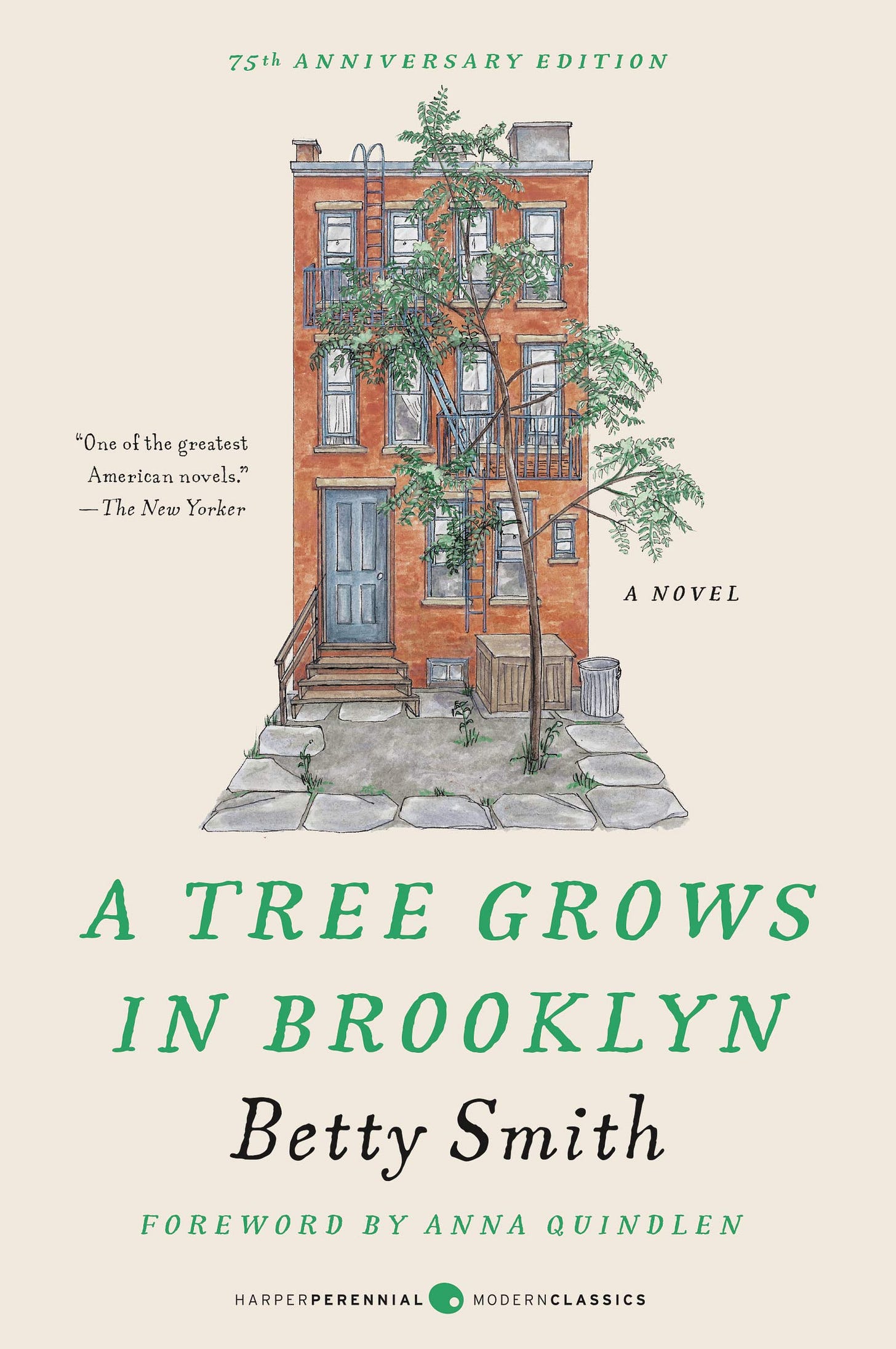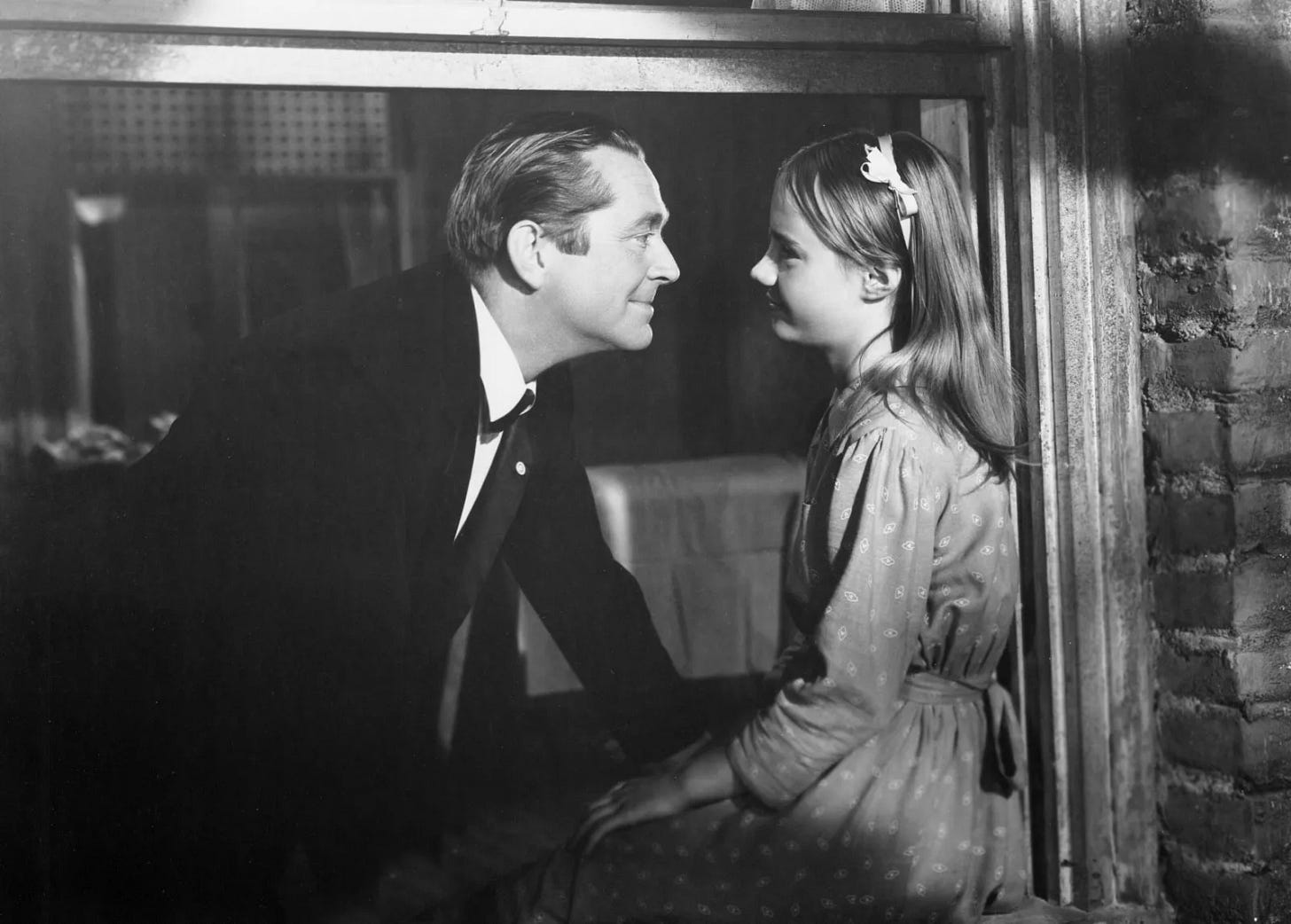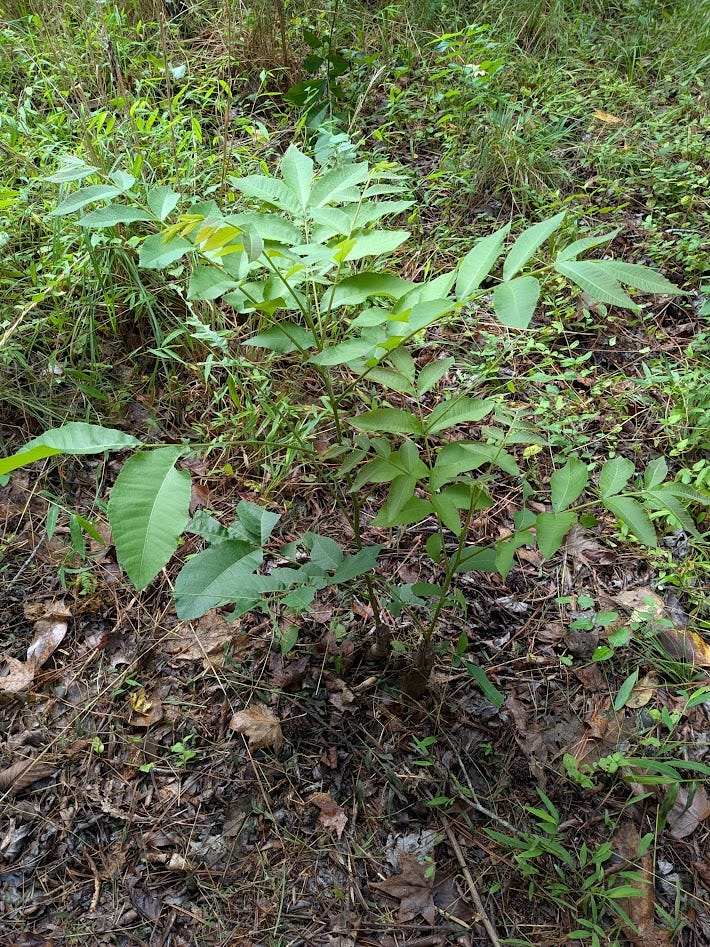Book Report: Tree of Heaven
Pardon, it’s actually “A Tree Grows in Brooklyn,” by Betty Smith. I do love a good recommendation. Thank you, you know who you are.
Published during WWII, "A Tree Grows in Brooklyn" is set in New York City a few years before WWI. The novel chronicles the daily struggles and cycle of poverty of the Nolan family, particularly following daughter Francie Nolan until age 17. Throughout the story, tree of heaven serves as a symbol of resilience and hope for Francie. This is a fascinating contrast with my own experience of the plant as an aggressive, invasive species!
The Nolans are Johnny, Katie, Francie, and Neeley. The story centers on Francie, who closely observes her world and her family. It is beautifully told through the events of her life, the family and neighborhood, and the inner lives of all involved. For example, the book opens with Francie and Neeley gathering junk to sell. Francie describes the bits of junk as “rags, paper, metal, rubber, and … tin foil from cigarette packages or chewing gum wrappers,” as well as the crowd of ragamuffin children and the junk dealer’s rough pinching hands, which she tolerates in order to earn an extra penny (the “pinching penny”). We read of her shame from picking junk and accepting the taunts of other children and the junk dealer’s pinches, and her happiness from earning a few pennies to split between candy and contributing to the family.
Francie loves reading. Each night, at her mother’s insistence, the family reads together from the Bible or Shakespeare. She makes frequent visits to the library, where the librarian attempts to thwart her interests by offering the same two books again and again (”proper for a young girl”), but Francie only pretends to read the books while actually reading others. When she does take a book home, she likes to read on the fire escape, surrounded by a tree of heaven. This is one of the earliest scenes in the book, and several times throughout the story she perches on the fire escape to read or simply observe the neighborhood. She likes to look into neighboring apartments and watch young women getting ready to go out for the evening. She wonders at their uncertain lives from her shaded little perch. It’s a place of privacy and safety for her.
An eleven-year-old girl sitting on this fire escape could imagine that she was living in a tree. That’s what Francie imagined every Saturday afternoon in summer.
Unfortunately, the family’s daily lives are mostly overtaken by instability and tragedy. Much of this revolves around her father, Johnny. He’s a lover, a dreamer, and a singer by trade, while her mother, Katie, is the practical one who keeps the family afloat. Francie has a close relationship with Johnny and he is very encouraging towards her, and she loves to hear his singing on his way home at night. However, he is not reliable. She never knows what time he’ll be home; worse, sometimes he doesn’t come or is drunk, which she dreads. He’s often out of work, which adds to his dreamer’s depression, and he eventually drinks himself to death after being kicked out of the union. This hurt Francie, deeply. As she confessed to her brother, Neeley, she even lost her faith in God, because she was angry that God would let Johnny die instead of helping him.
Like the tree, the family is resilient. This is mostly thanks to Katie’s unbreakable spirit. Where Johnny weaved soaring, inspiring dreams of adventure, money, and comfort, Katie sets her sights and her symbols in the here and now. At her own mother’s encouragement, she nails a tin can to the floor of the closet every time they move, as a way to save pennies to buy land one day. Although the “tin can bank” continually fails due to the exigencies of daily life, it is a practical symbol, emblematic of Katie’s approach. She never gives up. After Johnny’s death, she tells her children, “I am your mother and your father now.” When it’s apparent Johnny can’t provide for the family, she takes on more jobs. And in the children’s earliest days, when Francie was a sickly infant, neighbors tell her that it would be better to let Francie die than keep struggling, to which Katie responds by holding Francie tightly to her, and pointing to a tree of heaven:
Who wants to die? Everything struggles to live. Look at that tree growing up there out of the grating… it’s strong because its hard struggle to live is making it strong. My children will be strong that way.
Katie is right. The tree is strong, so are her children. By the story’s end, Neeley is becoming a singer like his father, with a more steady approach to work and life, and Francie is getting ready to depart for Michigan, achieving her dream of going to college. In the final scene, she sits at the bathroom mirror, washing her hair before going out. She hears Neeley coming into the apartment, whistling the song Darktown Strutter’s Ball (near and dear to my heart; my grandmother loves the song). Francie thinks of her younger self on the outside of such a scene, and looks out the window to notice a little girl, reading and eating candy, on a nearby fire escape. She notices as well a tree of heaven sprouting from a stump. It had been cut down as a nuisance, and yet, it lived.
A Tree Grows in Brooklyn is a beautiful and richly-realized story. To read this book is to live it; each page is given in the spirit of this advice from Francie’s grandmother, Mary Rommely: “Look at everything always as though you were seeing it either for the first or last time: Thus is your time on earth filled with glory.”
I’ll do my best. At home, we have tree of heaven. It’s invasive here in North Carolina, and I’m sure it is in Brooklyn, too. Yet it means something different when it’s the only green thing you have. I wish I could give Francie scented sweetbay magnolia, the profuse glory of a black-eyed susan, or lush patch of tomatos. I can’t do that, but in a way, that’s what she has given me.




Excellent book report! Even in the dry Great Basin region the tree of heaven is a nuisance. It’s a perfect example of thriving in spite of adversity.